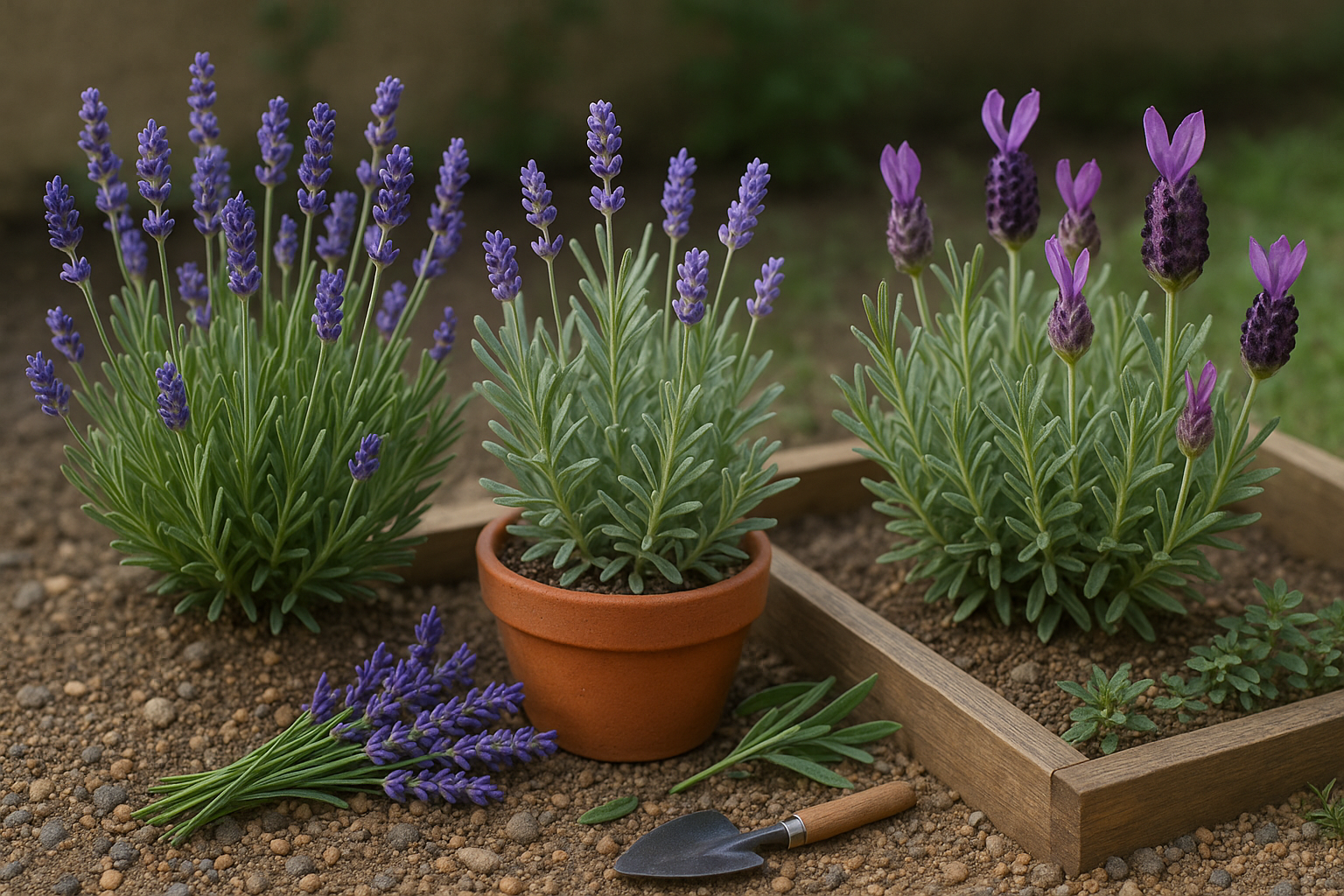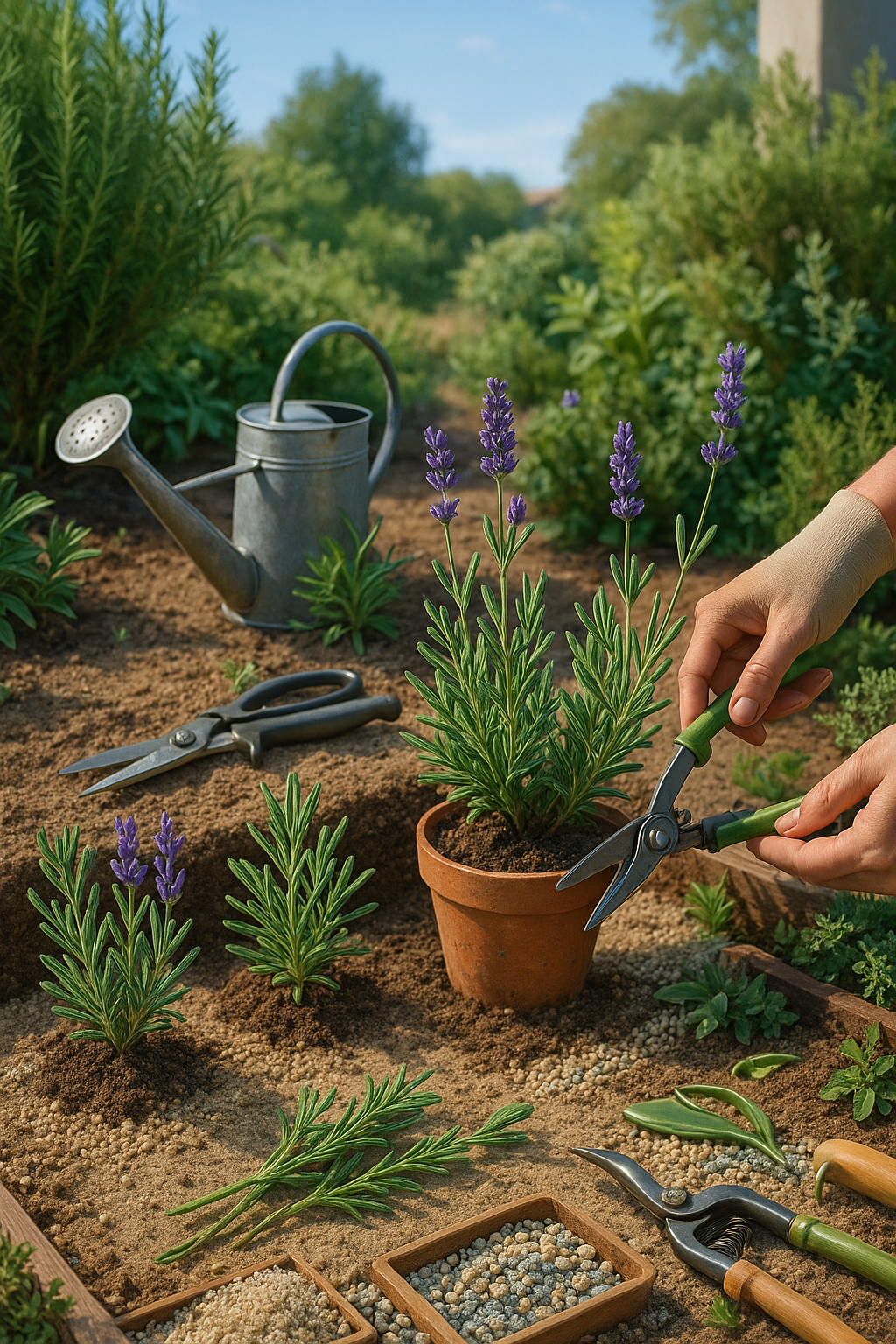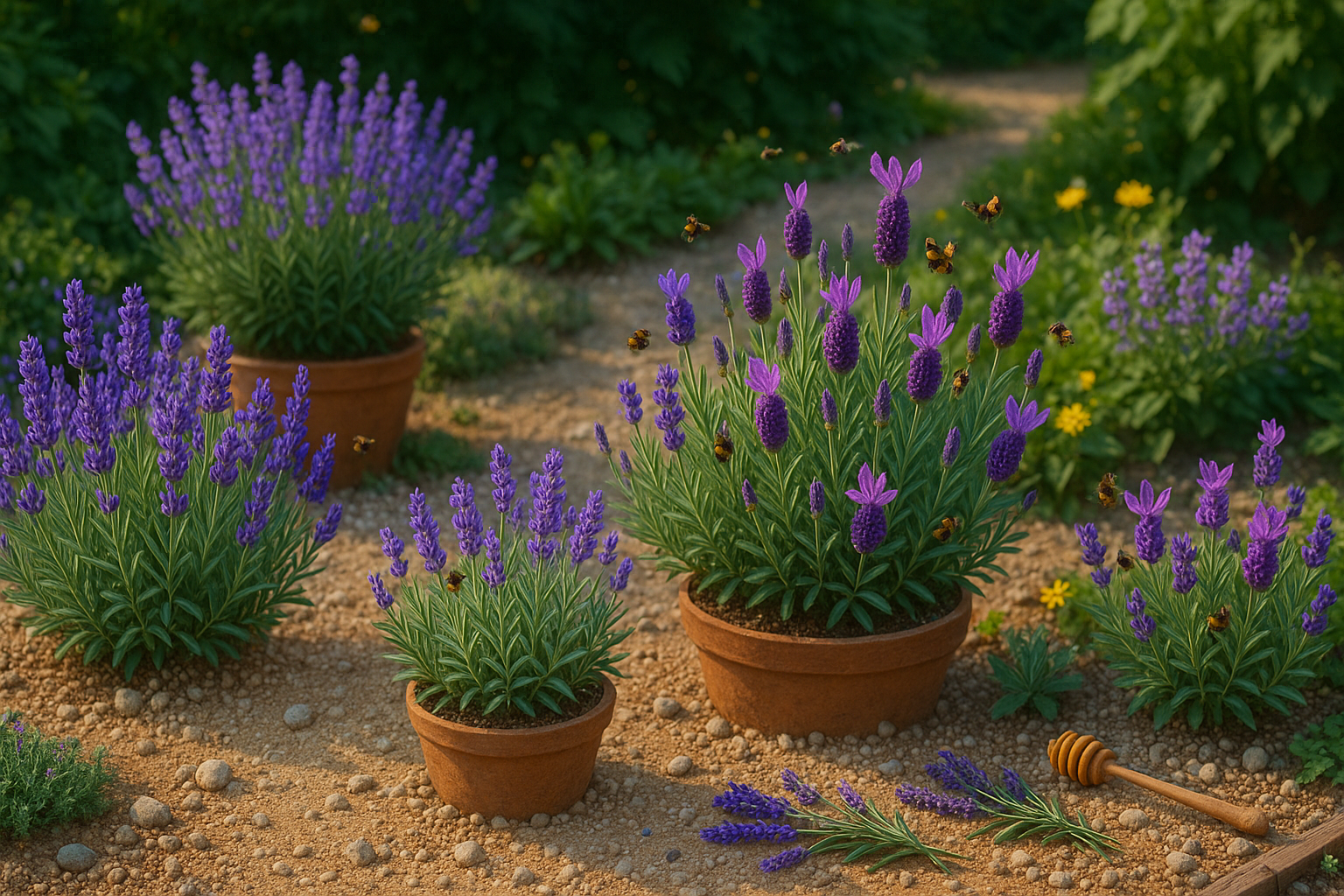Introduction
Looking for the best lavender varieties to grow at home? Choosing the right types of lavender can transform your space with soothing fragrance, stunning color, and a seemingly endless array of uses. Whether you want to brighten your garden beds, attract pollinators like bees and butterflies, or fill your home with calming scents, lavender is a superstar plant that does it all.
Some varieties offer rich, velvety purple blooms, while others provide delicate pastels or even striking silver foliage for added garden texture. Growers rave about how English lavender infuses the air with a classic, relaxing fragrance, while Spanish and French lavenders bring unique shapes and bold colors that make container gardens or borders pop.
Beyond their beauty, lavender plants thrive with minimal fuss—just give them plenty of sun and well-drained soil, and they’ll reward you with reliable growth season after season. Whether you’re a seasoned gardener or just starting out, the best lavender varieties can fit almost any climate and space, from window boxes to backyard plots.
Plus, you’ll have an endless source for homemade sachets, culinary treats, and fresh-cut bouquets. Growing lavender at home isn’t just rewarding—it’s a simple way to elevate your senses and your landscape all year round.
Understanding Lavender Types

When choosing lavender for your garden, it helps to know the difference between hardy and tender varieties—each has unique strengths depending on your climate. Hardy lavenders are most often English types (Lavandula angustifolia). They thrive in cooler regions and can withstand winter temperatures down to USDA zone 5, making them perfect for gardeners dealing with frosty winters.
Their compact size and richly fragrant blooms make them a favorite for borders or cottage gardens. On the other hand, tender lavenders like French (Lavandula dentata) and Spanish (Lavandula stoechas) are better suited to warmer, milder climates, generally thriving in USDA zones 7 through 10.
These varieties often have showier flower heads and a slightly different scent, but they struggle with harsh cold and may need to be brought indoors or heavily mulched in chillier regions. Regardless of type, all lavenders love plenty of sunlight—aim for at least six hours a day—and must have well-drained, slightly alkaline soil to prevent root rot.
If your garden soil is heavy or clay-like, amending it with sand or gravel is a proven way to boost drainage. For a Mediterranean look and minimal maintenance, plant lavender in raised beds or along slopes where excess water can drain easily. Mixing the right variety with your local conditions ensures your lavender will flourish and fill your space with beauty and scent.
Top Hardy Lavender Varieties to Grow at Home
When choosing hardy lavender varieties for your home garden, three tried-and-true favorites to consider are ‘Hidcote’, ‘Munstead’, and ‘Vera’.
‘Hidcote’ is known for its deep purple-blue flower spikes and compact shape, making it ideal for borders or patio pots. It blooms from late spring through midsummer and is prized for its intense, sweet fragrance—perfect for cutting, drying, or mixing into homemade sachets. ‘Hidcote’ is particularly cold-hardy, standing up well to winters in USDA zones 5-9, so it’s a reliable pick for gardeners in cooler climates.
‘Munstead’ is a classic English lavender with slightly paler, violet-blue blooms that generally appear earlier in the season, often starting in late spring. Its low-growing, tidy habit (usually up to 18 inches tall and wide) works well for edging paths or creating neat, aromatic hedges. ‘Munstead’ is also drought-tolerant and robust, thriving in both garden beds and containers. Its scent is herbal and clean, lending itself nicely to both culinary and ornamental uses.
‘Vera’ is sometimes called “true English lavender” and is loved for its graceful, pale lilac flowers and especially strong, traditional lavender aroma. It tends to flower a bit later than other varieties, from midsummer to early fall, extending your garden’s display. ‘Vera’ grows up to two feet in height, tolerates cold and poor soil, and is an excellent option for pollinator-friendly gardens or wildflower borders.
All three varieties share key advantages of being low-maintenance, drought-resistant once established, and deer-resistant—a real win for hassle-free gardening.
To get the most from these hardy lavenders:
- Plant them in full sun with well-drained soil
- Prune lightly after blooming to keep a tidy shape
- Enjoy their color, fragrance, and versatility—from fresh bouquets to natural pest control around the patio
Best Tender Lavender Varieties for Warmer Regions
When it comes to growing lavender in warmer regions, tender varieties such as French lavender (Lavandula dentata) and Spanish lavender (Lavandula stoechas) shine with their adaptability and stunning looks.
French lavender stands out with its softly fringed leaves and long-lasting spikes of purple-blue flowers, thriving in the heat and well-drained soil typical of Mediterranean and southern U.S. gardens. Spanish lavender is easily recognized for its showy “butterfly” bracts—the petal-like tufts perched on top of its chubby flower heads. These turn heads and attract pollinators from spring through early summer.
Both varieties prefer full sun and can tolerate drought once established, making them perfect for gardeners in USDA Zones 8-11, where winters are mild and summers are hot. If you live in a cooler climate, these lavenders can be grown as annuals, bringing vibrant fragrance and color through the warmer months. Alternatively, you can try overwintering them indoors in containers.
For success, plant tender lavenders in pots with good drainage and bring them inside before the first frost, placing them in a bright, cool room like a sunroom or unheated porch. Water sparingly during winter to prevent root rot, and avoid sudden temperature changes. In spring, gradually reintroduce your plants to outdoor conditions after the risk of frost has passed.
Even if overwintering isn’t feasible, replanting fresh tender lavender each season is a worthwhile choice for their ornamental flair and fragrant leaves—perfect for edging borders or filling decorative pots on a sunny patio. With a little care, these striking varieties can become a highlight of your warm-weather landscape, providing beauty and scent exactly where you want it most.
Choosing the Right Lavender for Your Garden or Containers
Selecting the right lavender for your garden or containers begins with understanding your goals and growing conditions. If you want neat borders or a fragrant hedge, English lavender varieties like ‘Hidcote’ or ‘Munstead’ are classic choices. They feature compact growth, reliable blooms, and deep purple flowers that stand out in formal plantings.
For container gardening, try dwarf varieties such as ‘Little Lady,’ which stay tidy and are easier to move around. These are perfect for patios or balconies with plenty of sun. If you plan to use lavender in recipes, opt for English types known for their sweet, mellow flavor—varieties like ‘Melissa’ work beautifully in baked goods or teas.
Warm, humid climates can be tough on traditional lavenders, but Spanish or French lavenders, such as ‘Anouk’ or ‘Provence,’ are more heat-tolerant and provide long-lasting blooms. Make sure your spot gets six to eight hours of full sunlight for the healthiest plants, and choose well-drained, slightly alkaline soil to avoid root rot—amend heavy clay with sand or gravel if needed.
Consider the fragrance, too: some lavenders have a soft, sweet scent, while others are more resinous and bold. If scent is important to you, sniff plants before buying. Lastly, remember that lavender colors range from deep violet to pale pink, so choose hues that complement the rest of your garden.
By matching the variety to your specific needs and growing conditions, you’ll enjoy thriving, beautiful lavenders wherever you decide to grow them.
Planting and Caring for Lavender at Home

Growing lavender at home is both rewarding and surprisingly low-maintenance once you know the basics. Start by choosing a sunny location—lavender needs at least six hours of direct sunlight daily. If your soil is heavy or tends to retain water, mix in sand or gravel to improve drainage, since lavender’s roots can rot in soggy ground.
When planting, space small varieties 12–18 inches apart and larger types about 2–3 feet apart to ensure good air circulation, which helps prevent disease. Water young plants deeply but infrequently, allowing the soil to dry out between waterings. Established lavender is drought-tolerant and prefers too little moisture rather than too much.
Pruning is key—trim lavender lightly in early spring to encourage bushier growth, and after the first major bloom, snip off spent flower stalks. For harvesting, cut blooms in the early morning when the oils are most concentrated. Bundle stems and hang them upside down in a dry, dark place.
Common Issues and Solutions
Yellowing leaves or slow growth often result from overwatering or poor drainage, so always check soil conditions first. If pests like aphids or spittlebugs appear, try a gentle spray with water or a homemade solution of mild soap and water instead of harsh chemicals. Fungal problems can usually be prevented with proper spacing, limited overhead watering, and by promptly removing any affected foliage.
Tips for a Healthy Lavender Garden
- Mulch with small gravel to keep weeds down without trapping moisture.
- Companion plant with drought-tolerant herbs like rosemary to help build a healthier, more resilient garden.
- Focus on organic practices to keep your lavender safe for culinary use while supporting pollinators and soil health.
By following these tips, you’ll create a fragrant, eco-friendly sanctuary in your garden.
Creative Ways to Use Home-Grown Lavender
Home-grown lavender is a versatile and rewarding plant, offering both beauty and multiple uses around the home. Start by harvesting lavender when the buds are just about to open but before they’re in full bloom—this preserves their color and fragrance best. Cut stems in the morning, tie them in small bunches, and hang them upside down in a cool, dry spot away from direct sunlight.
Once dried, you can create rustic bouquets that add calm and charm to any room. Make simple, fragrant sachets by loosely filling small fabric bags with the dried buds—perfect for tucking into drawers or under pillows to promote restful sleep.
Culinary enthusiasts can venture into lavender-infused treats; try adding a pinch of dried buds to sugar cookies, homemade lemonades, or even a cup of tea for a floral twist (just be sure you’re using culinary-grade lavender).
Lavender’s soothing properties also make it a wonderful ingredient for homemade bath salts or sugar scrubs—just mix dried buds with Epsom salt and a few drops of essential oil for an easy, luxurious self-care product.
For instant gratification, craft a lavender wand by weaving fresh stems with ribbon—these not only look beautiful but also keep their scent for months.
Even beginners will find these projects approachable, and with each use, you’ll be reminded of sunny days in the garden, making home-grown lavender a joy from harvest to every creative use.
Conclusion & Further Resources
Growing different lavender varieties at home brings color, fragrance, and pollinators to your garden, while offering endless uses in cooking, crafts, and aromatherapy. Experimenting with types like English, French, and Spanish lavender helps you discover which thrives best in your space and suits your tastes. Don’t hesitate to try new cultivars—each one has its unique beauty and benefits.
For more tips, check out guides from the Royal Horticultural Society and books like Lavender: The Grower’s Guide by Virginia McNaughton. You can also explore local university extension websites for region-specific advice on cultivating lavender successfully.
